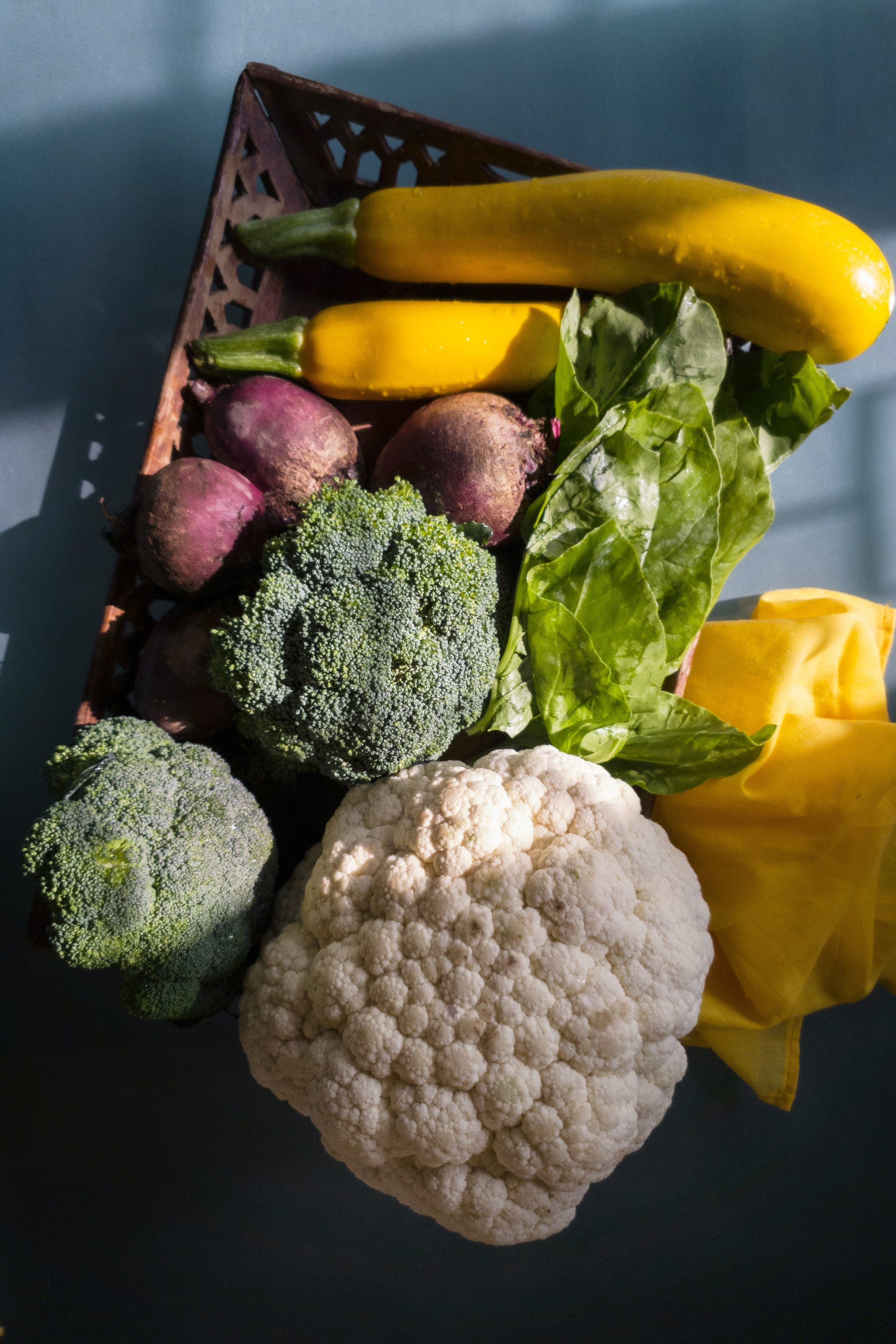Feeling Stressed Out and Anxious?
Before you go blaming rising covid numbers and your social media feed, you may want to take a closer look at the 39 trillion micro-organisms residing in your gut that are in constant dialogue with your brain and influencing your mood. Research shows that the community of microbes living inside your gut communicate with your central nervous system through neural, endocrine and immune pathways to regulate anxiety, depression, cognition, stress response, and disease. (1)(2)
Your Microbiome
Your ‘gut microbiome’ is made up of trillions of microorganisms and their genetic material that live in your intestinal tract. These microorganisms regulate functions vital to your overall health and wellbeing, including digestion, nutrient absorption, metabolism, body weight, immune function, brain health and psychological states. (2) (3) Our microbiota and its collective genomes actually provide us with genetic and metabolic attributes we have not evolved on our own, including the ability to synthesize vitamins from our food and make use of otherwise inaccessible nutrients and turn them into usable energy sources (4) (5) (6) Your gut microbiota also produce thousands of metabolites that play key roles in every aspect of human health, including brain function and psychological states. Collectively, our microbiome weighs in around 3-5 pounds. But, don’t let their small size fool you. Without them we couldn’t survive.
Although we establish a mostly stable, adult-like microbiome by the time we are three years old, our microbiome is mutable and highly responsive, for better or worse, to our lifestyle habits and environment. Things like diet, stress, sleep, pets, medications and home environment can alter your microbiome on a day to day, moment to moment basis. These changes in our microbial communities have an impact on both our physical and mental health.
The Microbiome-Brain-Gut Connection + You
In the past, the brain was thought to be an immune privileged organ with a blood brain barrier that protected it from pathogens and immune responses that could damage neurons and neural connections. While it’s true that our blood-brain barrier works hard everyday to protect our brain and keep toxins out, our understanding of the brain as a privileged organ has changed. Studies show that microbial by-products and metabolites from our gut bacteria actually play a role in the development and function of the central nervous system, thereby setting us up for health or putting us at risk for certain diseases and psychological disorders, including anxiety and depression (7) (8)
Brain-Gut Chatter: How it Works
The brain and the gut communicate through a bidirectional network of signaling pathways called the gut-brain axis, with 80-90% of the signals starting in our gut. (9) Gut microbes influence and direct the flow of information from our gut to our central nervous system through the use of our immune system and the release of hormones, metabolites, toxins and signalng molecules. (10)
Although most of the chatter originates in the gut and travels upwards, our brain also sends messages to our gut, letting it know what’s going on. Just thinking about eating a piece of fruit can get the stomach to release digestive juices in anticipation of that mouth-watering bite. (11)
The central nervous system is also able to convey psychological stress to the gut through the release of stress hormones and inflammation. These messages can alter the communities of gut microbes and trigger an increase in pathogenic bacteria which, overtime, creates low grade, chronic inflammation from bacterial endotoxins. (12). Systemic inflammation can access the brain and trigger neurotoxic affects that affect basic brain cell function.
The Gut-Brain Axis + Mental Health: What the Studies Show
Studies comparing the microbiome of healthy individuals to individuals suffering with major depressive disorders showed that pro-inflammatory species of microbes reigned over beneficial bacteria in the guts of depressed individuals.( (13) In another more mundane study that most of us can relate to, researchers tracked the gut bacteria of healthy university students during a semester at school. During exam period, when the students’ stress levels soared, there was a downslide in the number of health-promoting bacteria present in their gut. (14)
Stress and depression has also been shown to increase gut permeability, leading to leaky gut. a condition where the tight junctures in the intestinal wall are damaged, allowing bacteria, yeast and their end products to leak out into the bloodstream where they circulate and create an inflammatory response. Some of these bacteria are also able to cross the blood brain barrier and trigger inflammation in the brain. Evidence suggests a number of factors can contribute to leaky gut, including an overgrowth of bacteria in the small intestine.
The unhealthy feedback loop between the gut and the brain can lead to chronic brain inflammation seen in many psychological disorders, including depression, anxiety, personality disorders, and schizophrenia.(15)
Breaking it Down:
Poor gut health negatively impacts brain health
Stress, depression and other psychological disorders negatively impact gut health.
Even short, mild episodes of stress can alter gut microbial balance and diversity, triggering a host of reactions that loop back to the central nervous system and impact emotional well-being. (16)
The feedback loop between our gut and brain can support a healthy gut and brain or lead to dysbiosis, psychological distress and disease. It all depends on what signals and messages are being shared.
Health promoting communication between gut bacteria and the central nervous system is vital for emotional health and well-being.
By improving our gut microbiome and actively working on how we manage stress, we can improve our overall health, brain function and mood.
13 Actionable Tips for a Healthy Mind-Gut Connection:
Eat more plants. Research shows that a whole food-plant-based diet, filled with a wide variety of fiber-rich, colorful vegetables, fruits, whole grains, legumes, nuts and seeds nourishes the beneficial bacteria in your gut and contributes to the diversity of the gut microbiome as a whole. (17)
Eat a variety of plant foods: A diet composed of diverse and different plant foods, promotes gut diversity because different bacteria thrive on different polyphenols and fiber.
Fiber first: Gut microbes produce anti-inflammatory short-chain fatty acids (SCFAs) through the fermentation of indigestible dietary fiber and resistant starch. SCAFs have anti-inflammatory properties, protect against leaky gut, nourish good bacteria and protect immune cells. Eating fiber encourages the growth of beneficial bacteria, keeping pathogenic bacteria at bay. (18)
Eat the rainbow: Polyphenols give plant food their color. Research suggests that polyphenols have a positive impact on gut metabolism and immunity and confer anti-inflammatory properties. (19)
Limit foods high in sugar, artificial sweeteners, and refined carbohydrates: These foods nourish the bad gut bacteria and can lead to dysbiosis. (20)
Reduce your consumption of saturated fats and animal protein. Diets rich in animal protein have been shown to compromise the health and diversity of your gut microbiome, so reducing your consumption of animal products can be helpful too,( 21)
Add fermented foods to your plate: Fermented foods like kimchi, miso and kefir are a natural source of probiotics (good bacteria).
Sleep better: Microbiome diversity and beneficial bacteria are associated with increased sleep quality. A good night’s rest reduces anxiety, boosts mood and makes us better able to handle our stress.(22)
Move more: Exercise improves mood and stress and reduces symptoms of depression and anxiety. Research also suggests that exercise improves inflammation, protects against leaky gut and has a positive impact on the composition of our gut microbiota and their metabolites. (23)
Breathe: Deep, slow breathing activates the parasympathetic nervous system, helping us to feel calm, present and relaxed. Try these breathing techniques to bust stress and feel better.
Practice daily gratitude: Tracking and acknowledging all the positive things in your life, from a morning coffee or beautiful sunrise, helps reduce stress and create a more positive mindset.
Go outside: Spending time in nature is a known stress-buster and mood elixir.
Make time for friends and family: Social connection lowers stress and anxiety and increases resilience and self-esteem.
Last Thoughts:
Like all great relationships, the microbiome-gut-brain axis requires strong, healthy communication to thrive. Eating well, sleeping well, managing stress, moving regularly, spending time in nature and cultivating a positive mindset is the love language of your microbiome-gut-brain axis. Putting these healthy habits into rotation can help you cultivate positive mental health, resilience and a more optimistic outlook on life.









